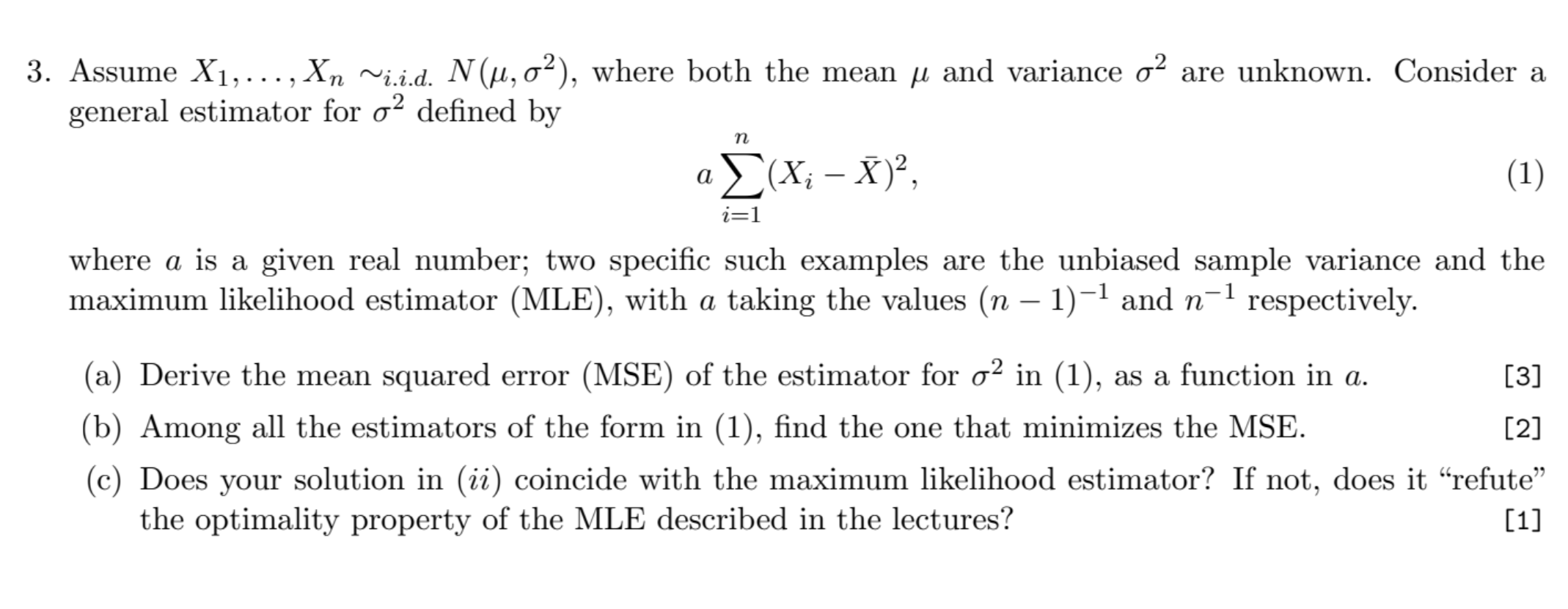Answered step by step
Verified Expert Solution
Question
1 Approved Answer
3. Assume X1,..., Xn ~i.i.d. N (, ), where both the mean and variance are unknown. Consider a general estimator for 2 defined by

3. Assume X1,..., Xn ~i.i.d. N (, ), where both the mean and variance are unknown. Consider a general estimator for 2 defined by n a (Xi - X), i=1 (1) where a is a given real number; two specific such examples are the unbiased sample variance and the maximum likelihood estimator (MLE), with a taking the values (n - 1)-1 and n-1 respectively. [3] (a) Derive the mean squared error (MSE) of the estimator for in (1), as a function in a. (b) Among all the estimators of the form in (1), find the one that minimizes the MSE. [2] (c) Does your solution in (ii) coincide with the maximum likelihood estimator? If not, does it "refute" the optimality property of the MLE described in the lectures? [1]
Step by Step Solution
There are 3 Steps involved in it
Step: 1

Get Instant Access to Expert-Tailored Solutions
See step-by-step solutions with expert insights and AI powered tools for academic success
Step: 2

Step: 3

Ace Your Homework with AI
Get the answers you need in no time with our AI-driven, step-by-step assistance
Get Started


